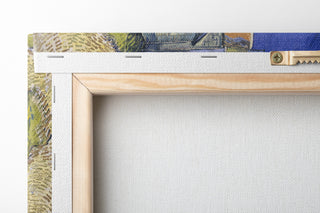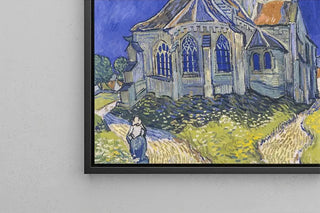Pavilion at Wanstead Grove, October 2, 1828 - Anne Rushout


Vue de dos

Cadre (en option)
Pavilion at Wanstead Grove, October 2, 1828: a harmony between nature and architecture.
This captivating art print, "Pavilion at Wanstead Grove, October 2, 1828," evokes a suspended moment in time, where the beauty of nature blends with the elegance of human construction. The soft colors and delicate nuances of the canvas create a peaceful atmosphere, inviting the viewer to immerse themselves in this idyllic landscape. The painting technique, with its fluid brushstrokes, brings the foliage and the filtered light through the trees to life, making every detail vivid. This art print is a true ode to serenity and the beauty of English gardens, where each element seems to tell a story.
Lodge at Wanstead Grove October 2, 1828: a witness to the Romantic era.
The artist behind this art print, Lodge at Wanstead Grove October 2, 1828, is a representative of the Romantic period, a movement that valued emotion and nature. This artistic current, which emerged at the end of the 18th century, was influenced by the social and political upheavals of the time, as well as by a return to nature. Artists of this period sought to capture the essence of natural beauty and to express deep feelings through their art. Lodge, with his delicate and poetic approach, perfectly fits into this tradition, offering a nostalgic and contemplative view of his environment.
A decorative art print with multiple virtues.
The reproduction of "Pavilion at Wanstead Grove, October 2, 1828" makes an ideal decorative piece for various spaces, whether a living room, an office, or a bedroom. Its faithful print quality and aesthetic appeal make it a centerpiece that draws attention and sparks conversations. By incorporating this art print into your interior, you bring a touch of elegance and serenity, transforming your space into a haven of peace. The canvas, with its soothing colors and romantic atmosphere, will harmonize with different decorating styles, making each room more welcoming and warm.

Rendu mat

Vue de dos

Cadre (en option)
Pavilion at Wanstead Grove, October 2, 1828: a harmony between nature and architecture.
This captivating art print, "Pavilion at Wanstead Grove, October 2, 1828," evokes a suspended moment in time, where the beauty of nature blends with the elegance of human construction. The soft colors and delicate nuances of the canvas create a peaceful atmosphere, inviting the viewer to immerse themselves in this idyllic landscape. The painting technique, with its fluid brushstrokes, brings the foliage and the filtered light through the trees to life, making every detail vivid. This art print is a true ode to serenity and the beauty of English gardens, where each element seems to tell a story.
Lodge at Wanstead Grove October 2, 1828: a witness to the Romantic era.
The artist behind this art print, Lodge at Wanstead Grove October 2, 1828, is a representative of the Romantic period, a movement that valued emotion and nature. This artistic current, which emerged at the end of the 18th century, was influenced by the social and political upheavals of the time, as well as by a return to nature. Artists of this period sought to capture the essence of natural beauty and to express deep feelings through their art. Lodge, with his delicate and poetic approach, perfectly fits into this tradition, offering a nostalgic and contemplative view of his environment.
A decorative art print with multiple virtues.
The reproduction of "Pavilion at Wanstead Grove, October 2, 1828" makes an ideal decorative piece for various spaces, whether a living room, an office, or a bedroom. Its faithful print quality and aesthetic appeal make it a centerpiece that draws attention and sparks conversations. By incorporating this art print into your interior, you bring a touch of elegance and serenity, transforming your space into a haven of peace. The canvas, with its soothing colors and romantic atmosphere, will harmonize with different decorating styles, making each room more welcoming and warm.



